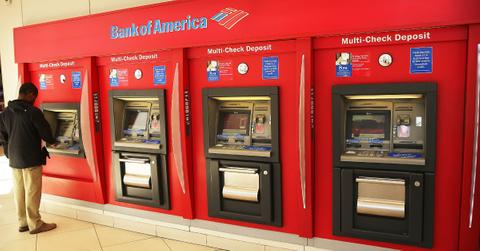Banks Invest the Money You Deposit in a Number of Different Places
When you deposit your money into a bank, it may be invested in a number of different things. So, where do banks invest their money?
March 15 2023, Updated 12:48 p.m. ET

It’s a well-known fact that banks are among the largest corporations that bring in massive amounts of revenue for their financial services. So, how do banks make money? People have become quite interested in knowing the answer to this as well as where banks invest their money since the Silicon Valley Bank (SVB) collapsed in March 2023. The bank has since been seized by the FDIC and has been ordered to close.
Banks bring in income from interest charges and fees. They invest in real estate, commercial or consumer loans, and government securities. Banks might also invest in public companies.
Read on for an in-depth explanation on how banks make money and more importantly, where the money they receive from consumer deposits and other transactions is invested.

How do banks make money?
There are several major categories of banking institutions.
First, commercial banks tend to make most of their income through interest fees. Commercial banks are often where everyday customers open checking and savings accounts. At a commercial bank, you might secure a mortgage or open up a CD (certificate of deposit).
Commercial banks borrow money at low interest rates, then make money by charging higher interest rates to their borrowing customers.
Investment banks serve institutional clients and high-net-worth individuals. They help companies with the IPO process, advise businesses during mergers and acquisitions, and often offer wealth management services. Their revenue mainly comes from fees. These banks usually have their own investment portfolios as well.
A universal bank like Bank of America, JPMorgan Chase, or Wells Fargo might combine features of commercial and investment banks into one entity. These large banks earn income from interest and fees.
Where do banks invest the money they receive?
Banks can invest a portion of their funds in various investment vehicles including real estate, government securities, and commercial and consumer loans.
Real estate investments for banks include the mortgage lending arm of the business. Banks offer long-term lending on homes, farmland, and business property. They also invest in home equity lines of credit and construction loans. Loans might be fixed-rate or variable rate, both of which offer different benefits to the lender and the borrower.
Banks also invest by providing business loans. Small businesses and others borrow funds in fixed amounts or via a line of credit through the bank, from which the bank takes interest charges.

Banks sometimes invest their money in business loans.
Consumer loans account for a portion of banks’ investment income as well. Individuals borrowing money for an automobile purchase, furniture purchase, or other large expenses can reap interest rewards for the lending bank.
Government securities like Treasury bills and bonds are also part of many banks’ investment portfolios. The New York Times reported in August 2021 that banks are being forced to invest more of their cash in government bonds and securities because fewer customers are taking out loans.
Banks like Bank of America and Wells Fargo stated that they're bringing in less income from lending because customers don’t need as many loans. Thanks in part to economic stimulus payments and enhanced unemployment benefits, many Americans have paid off credit card debt and avoided taking out bank loans.
Although the higher bank balances are clearly a source of financial security for consumers, banks still need to make money somehow. Deposits at commercial banks were 30 percent higher than pre-pandemic deposit levels as of late August 2021, according to The New York Times. This drives many banks to invest more in government bonds to earn the interest they need for operations.
